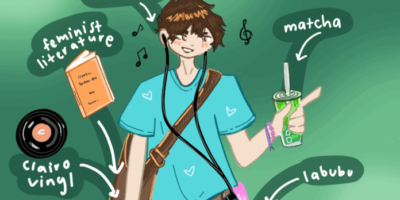Evolution of human culture is a key aspect to the progress of mankind. The Oxford Dictionary defines culture as “the arts and other manifestations of human intellectual achievement regarded collectively”. Unfortunately, lately, intellectual property rights and laws have become a massive impediment. These days, it has become necessary to spend a lot of money to keep one’s self relevant culturally.
The widespread style of art from the Renaissance has influenced the world to an extent measurable even in today’s culture. For example, the influence of gothic architecture cannot be overlooked in most European countries and former colonies. If the architects of the Renaissance era copyrighted their styles of cathedrals and royal residences, we would live amidst chaos and confusion with little to no continuity and flow between buildings. If artists were suing others over similarly styled art, there would little to no progress in society as a whole. Early on, copyrights made sense to preserve the livelihood of authors. The idea of copyright protection was first introduced in the Statute of Anne in 1710 by the monarch currently ruling, Queen Anne. By the powers granted in the Statute of Anne, authors were allowed to grant exclusive rights to certain publishers for a short period of time after the publication of the first copy of a book. This is where the term “copyrights” originated.
When colonists moved to new lands, it seemed to be a good idea to implement the doctrines of patent and copyright protection “To promote the Progress of Science and useful Arts, by securing for limited Times to Authors and Inventors the exclusive Right to their respective Writings and Discoveries.” The original length of time for copyright protection was 14 years. This meant that for this period of time, only the copyright holder can profit from the intellectual property. This, however, has since changed. Walt Disney played an instrumental role in lobbying for longer times for copyright protection; the same person who profited massively by using the storyline of classics such as Grimms’ Fairy Tales, now wanted protection for his own works. This duration has since been revised. The last revision popularly known as the 1998 Sonny Bono act (that is the Sonny from Sonny and Cher) ensures that the original creator of content is granted copyright for the duration of his lifetime as well as fifty years after his death.
This also applies to patent law. Despite the original intentions to safeguard the hard work and creativity of inventors, patents have now become a convoluted idea. An interesting example is the classic six way D-pad control system. This D-pad was patented by Nintendo in 1985 and lapsed in 2005. This resulted in the excellent controller design displayed by Sony in PlayStation Vita. However, for the past twenty years, we have had to deal with the absolutely dismal D-pads on Xbox 360 and PlayStation 3 controllers. Similarly, the Apple versus Samsung saga in Europe and China is also testimony to the complications caused by patents. The patent buying spree that ensued after the collapse of Nortel is further testimony to how knowledge has become monetized.
Another widely-known side effect of patent law is the existence of patent trolls. Patent trolls are individuals or companies that have income generation solely by acquiring patents and then suing possibly infringers of these patents. This is in complete violation of the spirit of intellectual property preservation. Getting pleasure out of someone else’s misfortune is the most sadistic and least human a person can be. The complex nature of patent law has rendered patents as just a game of money and power fought between parties with copious amounts of money (and thus lobbying power).
Getting back to the point about copyright protection, the excessive need to “preserve” copyright protections has spawned censorship acts disguised as copyright protection acts such as SOPA, PIPA, DMCA, ACTA etc. Personal freedoms have been curtailed at the expense of copyright protection. There is total and complete disregard for the principles of “Free Use”. Works in public domain is gradually diminishing due to the extended copyright protection. Development of derivative works is adversely affected. For example, Vanilla Ice’s usage of the beat produced originally by the British rock band Queen, in their hit single “Ice Ice Baby” was a direct result of the hip-hop era of sampling famous beats. However, it was in violation of copyright laws and was thus penalized heavily. This was a major setback to the golden era of hip-hop. Another such illustration is Andy Warhol’s famous painting, “Campbell’s Soup Cans”. If copyright protection law was enforced in this case, one of the contemporary artists of our times could have been subject to the politics of copyright protection.
These and further examples show the principles of preservation of intellectual property need to be re-evaluated. Principles such as Creative Commons and GNU licensing seem to provide a good alternative to traditional copyright protection. They allow people to gain credit for their work yet not be as restrictive as traditional copyright protection. The movie and recording studios need to recognize the dynamic nature of human culture and the adaption required for the advancement of society.




Leave a Reply